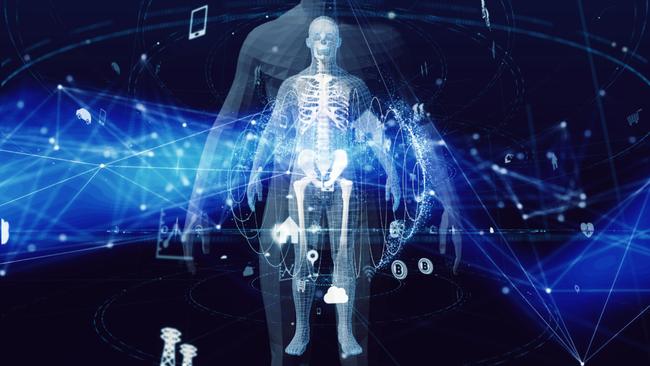Virtual reality medical imaging Singular Health up 117pc YTD as key investors climb aboard
Medical imaging and transfer technology company Singular Health up 117% YTD attracting key investors including Crypto high-flyer Craig Sellers.

Stockhead
Don't miss out on the headlines from Stockhead. Followed categories will be added to My News.
Medical imaging technology company Singular Health up 117% YTD
3Dicom converts medical scans into 3D or virtual reality and extended reality models
Singular Health pursuing contracts for its viewing, transfer and storage technology and AI with US managed serviced organisations
It’s been a strong year for the cutting-edge medical imaging technology company Singular Health (ASX:SHG), which is up ~117% YTD and has attracted key investor support including from crypto high-flyer, prominent technology executive and investor Craig Sellars.
SHG was founded in 2017 when Perth gynaecological oncologist Dr Jason Tan wanted to better understand a patient's cancer before he performed surgery.
Co-founder, managing director and CEO Denning Chong told Stockhead two other surgeons were reluctant to do the complex surgery.
"It was ovarian cancer, which had spread up the aorta and oesophagus," Chong said.
"He wished for some technology where he could see inside and see where the gaps were so he could work out the best surgical approach to remove the cancer."
Chong said Tan worked with developers to build technology to view 3D or virtual reality models from two-dimensional medical images for the difficult case to plan an optimal surgical approach.
"He was successful in undertaking the surgery and the patient is still alive today so that’s how the technology was born," he said.
SHG listed on the ASX in February 2021 with its medical software product 3Dicom translating and converting MRIs, CT and PET scans into 3D or virtual reality and extended reality (VR-XR) models.
"Doctors can put on their 3D goggles and can actually see inside the body so every gap, where every vein or artery is which helps with surgical preparation," Chong said.
Use case for image management
Since its early days Chong said the technology has been developed even further for clinicians to look at scans in 3D for better treatment.
SHG received 510(k) clearance from the US Food and Drug Administration in 2022 for 3Dicom as a Class II Software-as-a-Medical Device (SaMD).
"Where we see the real commercial opportunity is viewing, sending and storing the images for patients and hospitals, and the eco-system we provide for Managed Service Organisations and healthcare systems," he said.
Chong said that in the US in particular, patients are often sent their images on CDs, where doctors and care teams often don’t even have a CD reader for viewing.
He said for patients who are visiting doctors regularly with chronic illnesses for example, managing images on CDs can be difficult as it adds delays to diagnosis, extra costs and most patients simply don’t have the ability to view them.
"Part of the technology we built and have a patent pending for is our medical file transfer protocol or MFTP," he said.
Chong said 3Dicom integrates with most picture archiving and communications system (PACS) servers, both onsite and in the cloud, allowing for the easy retrieval of DICOM files for viewing in fully immersive 3D, VR and XR.
For a bit of explanation of technical jargon so you don’t have to Google terminology, PACS is the infrastructure where medical images are stored and retrieved by practitioners within the same organisation.
DICOM is an international standard for medical image files.
"Basically, what our technology does is transfers medical images from the PACS’ servers or from the hospitals or clinics to the patients and vice versa and is interoperable so on laptops, iPads, computers, mobiles phones," Chong said.
"For patients, especially those with chronic illnesses who may regularly be in medical care, it means they have their images with them all the time."
"They can access them through their own portal from the cloud whenever they are needed."
Reducing costs for healthcare providers
Chong said hospital administrators are also keen on 3Dicom technology for empowering patients as CDs are expensive and effectively not easily accessible, with multiple duplicate CD’s often having been sent out for each patient, which is an unnecessary cost.
He said the major opportunity for SHG which it was actively pursuing is managed service organisations (MSOs) in the US, which basically manage hospitals.
"MSOs in the US are organisations that hospitals engage with to assist in managing their operations such as administration functions, payments, equipment hire, payroll and so on," he said.
Chong said MSOs are often owned by doctors themselves and other large venture capital investors.
"A managed service organisation told us that just one of their smallest hospital systems spends about US$36 million in sending out imaging of which US$12 million or one-third is in duplication costs," he said.
"That is just one hospital system of many that we are actively pursuing, so there is a great opportunity and gap in the US market for our technology because it does reduce costs and duplication.
"Also, having images in your own hands has often proven better health outcomes for patients and resulted in patients staying sticky to their existing clinics and hospitals, which is why our product is so attractive to manage service organisations."
High profile backing
In July, SHG announced it had received a $1m investment from crypto high-flyer Craig Sellars, announced on March 14 and approved by shareholders in June.
The strategic investment was completed via a placement of 6,666,667 new fully paid ordinary shares in the company to Sellars at 15 cents/share, a 15% premium price to the closing price on March 13.
Sellars is a co-founder of the world’s largest and most used cryptocurrency stable coin, Tether (USDT), and is renowned as a prominent technology executive and investor.
Sellars was attracted to investing in SHG after becoming a user of its 3Dicom technology.
"From the moment I first used the 3Dicom software, I knew that I was looking at the leading edge of medical visualisation technology, miles beyond any other similar offering,” Sellars said in an ASX announcement in March.
"The potential for doctors and patients to navigate the human body in this way using augmented reality will improve health globally."
Chong said Sellars brought a wealth of experience, valuable expertise and opportunities to SHG via his significant network, opportunities with blockchain technology, digital identity, consumer-facing technology applications, and privacy-preserving record platforms.
"When he put the money in it was at a premium and he did it because he believed in our technology," he said.
"We’re in constant communication with Craig as part of our advisory."
Meanwhile, key stakeholder Marin and Sons in May added another $770k to a major investment it made back in November 2023.
In its latest investment Marin & Sons, – who are SHG’s lead US distributors – paid 16 cents/share for more than 4.8m new fully-paid ordinary shares , representing a premium placement of 39% compared to the last closing price of 11.5 cents/share on May 14, 2024.
Embracing AI technology
Chong said SHG has an artificial intelligence (AI) component which it is building out and pursuing with MSOs.
Harvard Medical School figures show AI assisted diagnosis could improve health outcomes by up to 40% and reduce treatment costs up to 50% by improving diagnosis, increasing access to care and enabling precision medicine.
"The use of AI in assisting with the usual ways of diagnosis in medicine is a huge area and the hospital operators or MSOs are very interested in using our AI models to help reduce costs and increase efficiencies," Chong said.
"For diagnosis, the hospitals would give us a whole lot of scans that we run through our AI models, and it may show on certain scans for example, areas of concern like a possible tumour which requires further investigation by a clinician.
"Alternatively, we can use the same process to reduce the risk of misdiagnosis and ensure what a doctor may have told a patient is correct, so there is a significant demand and trend towards using AI models by the hospitals."
This article was developed in collaboration with Singular Health Group, a Stockhead advertiser at the time of publishing.
This article does not constitute financial product advice. You should consider obtaining independent advice before making any financial decisions.
Originally published as Virtual reality medical imaging Singular Health up 117pc YTD as key investors climb aboard


